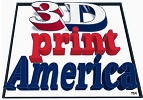Painting PETG filament can be a great way to add color and customization to your 3D printed models. Consider the following techniques and materials for painting PETG:
1. Surface Preparation: To ensure proper paint adhesion, it’s important to prepare the surface of the PETG print. Thoroughly clean the model with isopropyl alcohol or a mild detergent to remove any dirt, oils, or residues.
2. Primer: Using a primer designed specifically for plastics can improve paint adhesion and provide a smooth base. Look for a plastic-compatible primer like:

3. Acrylic Paints: Acrylic paints are versatile and widely available, providing a range of colors and finishes. Look for non-toxic, water-based acrylic paints suitable for plastics. Some brands that work well for painting PETG are:
· DecoArt
4. Spray Paint: Spray paints designed for plastics can provide quick and even coverage when painting PETG. Look for spray paints specifically formulated for use on plastics, such as:

5. Brushes and Applicators: High-quality brushes or foam applicators are essential for achieving smooth and precise paint application. Look for brushes with synthetic bristles suitable for acrylic paints. Brands with good options:
6. Sealant: To futher protect PETG prints, apply layer(s) of sealant to your painted model will add extra protection and enhance its longevity, consider applying a clear sealant or varnish. Applying thin multiple layers and letting them dry between application will help avoid gaps in coverage and less chances of blobs or runs appearing. Look for a clear acrylic sealer that is compatible with both acrylic paints and plastics. Mod Podge Clear Acrylic Sealer is a popular choice.
7. Sanding and Finishing Tools: Before painting PETG, it is recommended to lightly sand the surface of your print with a medium-fine grit sandpaper like 3M Wetordry Sandpaper to create better adhesion for the primer and paint. Additionally, foam brushes or foam sanding pads can be useful for achieving a smooth finish and blending paint layers.
Remember to follow proper safety precautions when using paints and sealants, such as working in a well-ventilated area and wearing appropriate protective equipment.
By utilizing these techniques will make painting PETG models more successful as you achieve vibrant and durable painted finishes on your PETG prints. May your 3D Journey be colorful!







